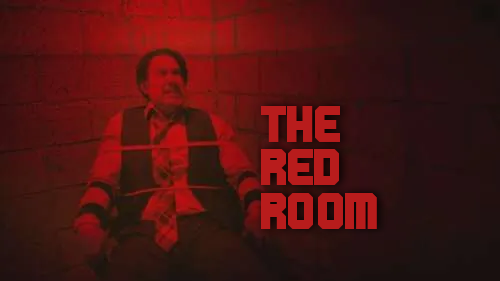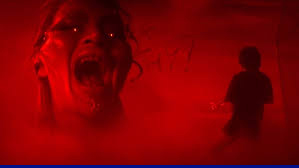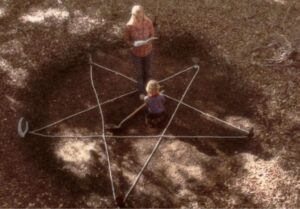
You are on the dark side of the internet, where myths and legends grow. Today, we’re going to look into the scary story of “The Red Room,” a thing that people say exists on the dark web.
Hello, internet hunters. We’re going to talk about The Red Room today, which is one of the most well-known urban tales of the digital age. People have been talking about this scary website for years, saying that it offers live streams of torture and murder for a large fee.
Does any of this scary talk have any truth to it, or are these stories just complex hoaxes and urban legends? Come with us as we try to figure out what happened in “The Red Room” and sort fact from fiction.
Chapter 1 : The History
To fully understand the Red Room, we must go back to the early days of the internet. Back then, people could remain anonymous online, and urban tales were big. It was in this scary and interesting place that the story of the Red Room began.
People first talked about the Red Room on chat rooms and internet sites in the late 1990s and early 2000s. Anonymous users would discuss a secret website that was exclusively accessible via the dark web. On this website, people could pay to watch live streams of horrible acts of torture and violence.
During a time of fast technological progress and social unease, the Red Room myth began to spread. Our fears about what lurked in the deepest parts of the internet grew as it grew bigger and easier to use. The media jumped on the shocking story, which made people even more scared and kept the Red Room idea alive. Even though there was no solid proof, the story kept going, changing over time and spreading like a bug across the internet.
But where did the Red Room story come from, and why has it been around for so long? Some people think it was made up as a piece of internet fiction, a story meant to scare individuals away from the dark web. Others think it might have been a fake story made to make people afraid and suspicious.
It’s not clear where the Red Room story came from, but one thing is for sure: it made us worry about the internet and technology in a deep way. As the story spread, it became its own thing, changing to fit the fears and hopes of the people who heard it.
The Red Room’s past is just as unclear and mysterious as the dark web itself. It’s still not clear where it came from, but its history serves as a warning about the power of myths and the risks of the digital frontier.

Chapter 2: The Truth
What, then, is the truth about the Red Room? Even though there have been many investigations and a lot of guesses, there is no solid proof that such a website exists. There are illegal things that happen on the dark web, but the idea of a live-streamed torture room is still just a fantasy.
The Red Room is really just an internet ghost story—a scary story made up in the dark corners of the internet. Myths like these can play on our deepest fears and worries, so it’s important to think about them with a healthy dose of doubt and critical thought.
Law enforcement agencies all over the world have looked into the Red Room many times but have never found any proof of its presence. Despite sightings and tales of underground networks, law enforcement agencies have never found solid proof of the existence of such a website.
But why does the Red Room story keep going strong even though there is no proof? Some people think that it helps us all get rid of our worst fears in a safe space so that we can feel better. Some people see it as a warning about the risks that lurk online for everyone. There have been more cybercrime probes, and people on the internet are more paranoid because of all the Red Room stories. Being alert is important, but it’s also important to tell fact from fiction and not believe what people say to scare you.
We may never know for sure what happened in the Red Room, but one thing is for sure: It’s a story that should teach us to be careful and skeptical on the internet. It’s important to always question everything and never believe anything, because the truth isn’t always what it seems to be.

Chapter 3: What Happened?
The Red Room might just be a made-up place in our minds, but the things that happen in it are very real. The myth has caused a lot of trouble in both the real and digital worlds, from media panic to crackdowns by the police.
People on the internet are scared and panicked because of how dramatic the Red Room myth is. The media has exploited the story to generate revenue by inflating its shock value to entice viewers or readers. This has helped spread the lie, making people even more scared.
The huge number of “Red Room” stories has had very bad effects on law enforcement. Online, there have been more reports of cybercrime and abuse, and there has also been more vigilantism as people try to find the truth behind the myth.
The Red Room story may have done the most harm by making people less trusting of the internet and technology. People on social media and in online groups feel paranoid and vulnerable because they don’t know who or what to believe, as rumors and speculation spread like wildfire.
Many people are afraid of the internet and technology, and the Red Room story plays on those fears. The narrative aims to alert readers to the potential hazards present in the digital realm. But it also shows how important it is to be able to think critically and understand how to use media in this age of too much information. The Red Room lie has numerous complex effects, such as media sensationalism, law enforcement, and the way people perceive the narrative. The Red Room is a warning tale that reminds us to be careful and skeptical on the internet, even though the truth may be hard to find.
Thanks for coming with us on this trip into the dark heart. Be careful outside, and don’t believe everything you read online.






